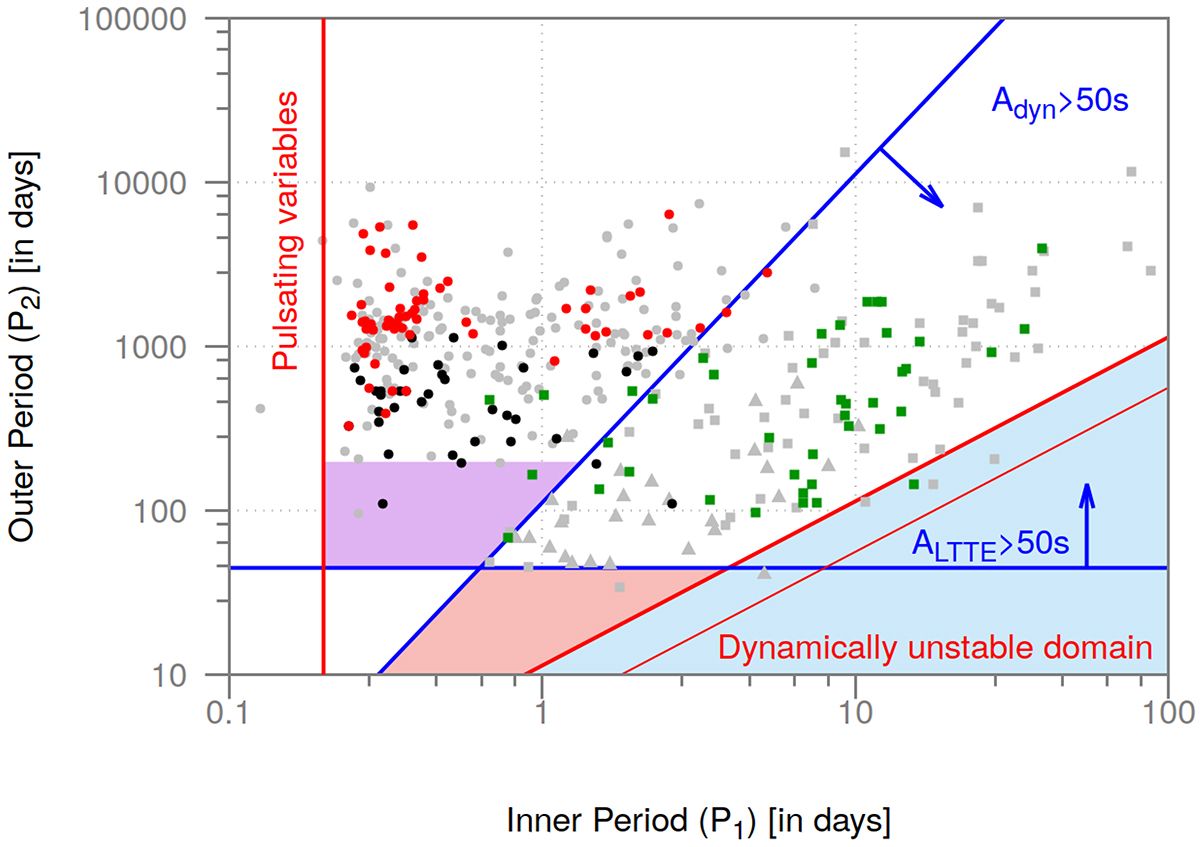Fig. 2.

Download original image
Locations of the analyzed hierarchical triple star candidates together with other triples, detected with the space telescopes Kepler and TESS in the P1 − P2 plane. The black and red dots and green squares represent the current NCVZ candidates. For the black and red systems, simple LTTE solutions were satisfactory, while for the green systems, the dynamical effects were also taken into account. (The red symbols denote the most uncertain solutions, which were omitted from the statistical investigations.) The gray dots and squares denote the same classes of hierarchical triple star candidates as in the original Kepler-field, which were analyzed in Borkovits et al. (2016). The gray triangles represent recently discovered K2 and TESS systems with accurately known photodynamical solutions. (These are mostly triply eclipsing triple systems.) The vertical red line at the left side shows the lower limit of the period of overcontact binaries. The horizontal and sloped blue lines are boundaries that roughly separate detectable from undetectable ETVs. The detection limits were again set to 50 s. These amplitudes were calculated following the same assumptions as in Fig. 8 of Borkovits et al. (2016), that is, mA = mB = mC = 1 M⊙, e2 = 0.35, i2 = 60°, ω2 = 90°. The arrows indicate the direction of the increase in the respective amplitudes. The shaded regions from left to right represent (i) the W UMa desert, which is the (almost) empty domain in which a tight third companion of a short-period EB would certainly be detectable through its LTTE, even in the absence of a measurable dynamical delay, (ii) the purely dynamical region, in which the dynamical effect should be detectable while the LTTE would not, and (iii) the dynamically unstable region in the sense of the Mardling & Aarseth (2001) formula. While the border of this latter shaded area was also calculated with e2 = 0.35, we also give the limit for e2 = 0.1 as the thinner red line within this (light blue) region.
Current usage metrics show cumulative count of Article Views (full-text article views including HTML views, PDF and ePub downloads, according to the available data) and Abstracts Views on Vision4Press platform.
Data correspond to usage on the plateform after 2015. The current usage metrics is available 48-96 hours after online publication and is updated daily on week days.
Initial download of the metrics may take a while.


